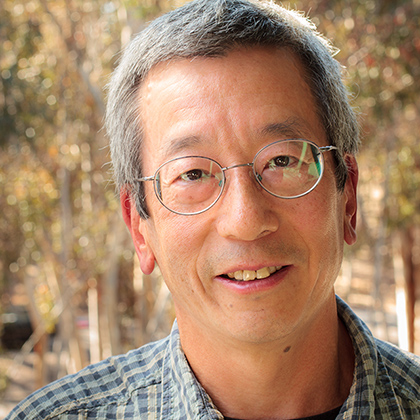By:
- Scott LaFee
Published Date
By:
- Scott LaFee
Share This:
Roger Tsien, Chemistry, 2008

Roger Tsien
Four years ago, UC San Diego professor of pharmacology, chemistry and biochemistry Roger Tsien, won the Nobel Prize for chemistry (with Martin Chalfie and Osamu Shimomura) for their ground-breaking research in developing green fluorescent proteins derived from a bioluminescent jellyfish.
Much of the acclaim that followed celebrated the novel possibilities of being able to use these glowing molecules to peer inside living cells or whole animals, to observe interactive biology in real time and to ask and do things previously deemed impossible.
Tsien could have stopped there, of course, content to rest upon his Nobel laurels, but he wanted to do something clinically relevant with his research. And he has: Working with colleagues like Dr. Quyen T. Nguyen, an assistant professor of head and neck surgery in the UC San Diego School of Medicine, Tsien has helped develop experimental injectable fluorescent peptides that cause hard-to-see peripheral nerves to glow, allowing surgeons to avoid them when removing damaged or cancerous tissues.
Current Faculty Nobel Laureates
“The analogy I use is that when construction workers are excavating, they need a map showing where the existing underground cables are actually buried, not just old plans of questionable accuracy,” Tsien said. “Likewise, when surgeons are taking out tumors, they need a live map showing where the nerves are actually located, not just a static diagram of where they usually lie in the average patient.”
As a Howard Hughes Medical Institute investigator, Tsien is working to better visualize cancer in other ways – or maybe treat it. He and colleagues have designed U-shaped peptides able to carry either imaging molecules or chemotherapy drugs to targeted cancer cells.
And Tsien continues his efforts to better reveal the unseen world, creating a new type of genetic tag (this time derived from a cress plant) visible under an electron microscope that illuminates life down to the internal anatomy of individual cells.
Share This:
You May Also Like
UC San Diego is Strengthening U.S. Semiconductor Innovation and Workforce Development
Technology & EngineeringStay in the Know
Keep up with all the latest from UC San Diego. Subscribe to the newsletter today.



